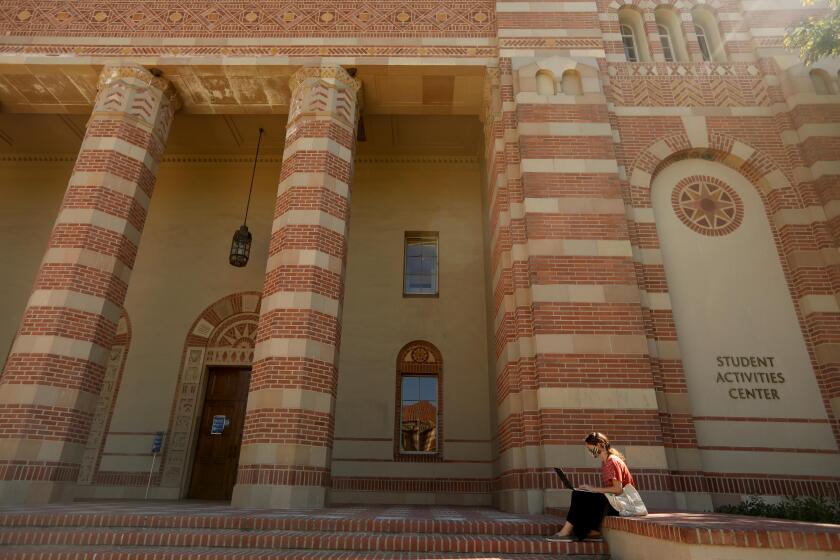Depression-era landmarks in Southern California
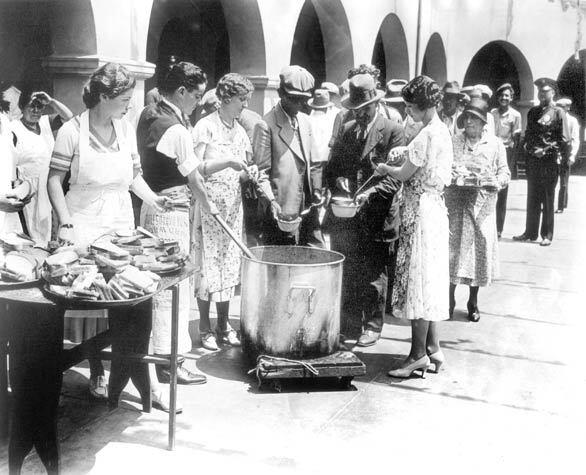
How bad could a Depression be, with fresh boysenberrries, an Assyrian castle, Shakespeare under the stars and a nudist queen named Zorine?
These, it turns out, are just a few of the wonders that Southern California gained between 1929 and 1941, when so many Americans were losing so much. We came upon them after Travel readers suggested a more localized follow-up to the San Francisco survey we did (“Exploring the Depression’s artistic legacy in San Francisco”).
That sounded right to us. So weve consulted a few historical societies and called a few experts, including Los Angeles architect Brenda Levin and Orange County historian Phil Brigandi.
The result is this list, just as rigorously unscientific as the San Francisco list. Eleven landmarks, no waiting.
— Christopher Reynolds, L.A. Times staff writer (File photo / Los Angeles Times)
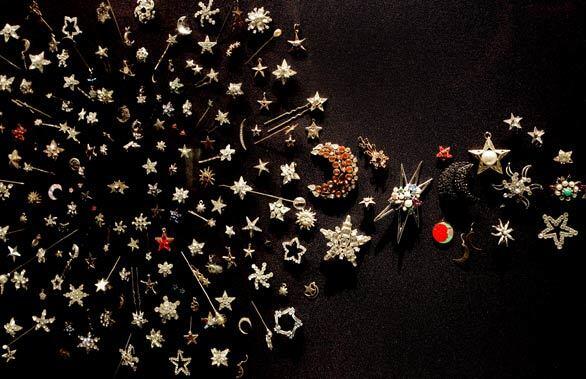
Beginning with Rebel Without a Cause in the 50s, the vintage Griffith Observatory has costarred in many a movie.
The site reopened in 2006 after a four-year closure for renovation and expansion (mostly underground). Admission is free. Closed Mondays.
More than 2,200 pieces of celestial jewelry collected over 25 years by Kara Knack make up the Cosmic Connection exhibit at the observatory.
Related story: “Exploring the Depression’s artistic legacy in San Francisco” (Anne Cusack / Los Angeles Times)
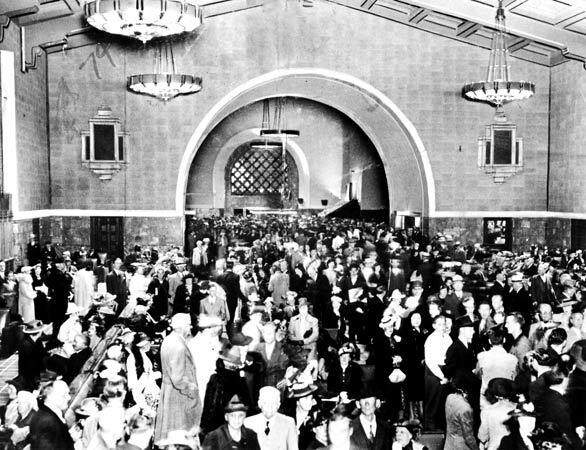
Union Station, 800 N. Alameda St., Los Angeles.
Built in 1939, this was the last major train station constructed in
With its tile floor and fanciful roofbeams, its part Mission Revival, part Streamline Moderne. Unfortunately, one of its old restaurant spaces is idle most of the time, but you can eat well on site at Traxx.
Related story: “Exploring the Depression’s artistic legacy in San Francisco”
Passengers stream through Union Station in 1939. (File photo / Los Angeles Times)
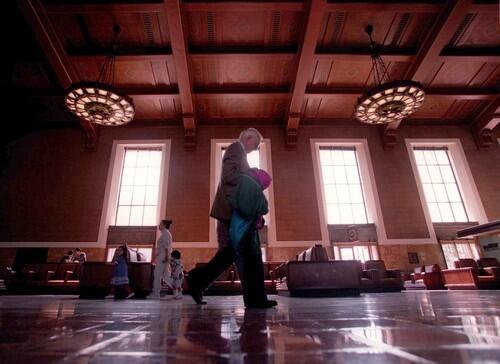
Amtrak, Metrolink and the citys Metro Rail system converge at Union Station.
(Also, from outside youll see the twin Spanish revival towers of the Post Office Terminal Annex building (1938) at Macy and Alameda streets.
Interior of Union Station.
Related story: “Exploring the Depression’s artistic legacy in San Francisco” (Robert Gauthier / Los Angeles Times)
Advertisement
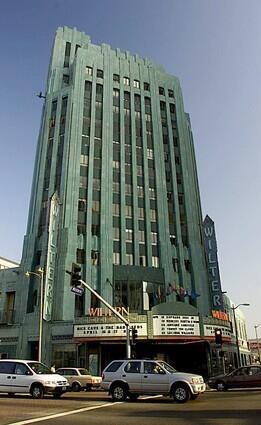
Wiltern Theater, 3790 Wilshire Blvd., Los Angeles; (213) 388-1400.
This theater and the adjacent Pellissier Building together amount to an art deco wonder (some call it Zig Zag Moderne), clad in turquoise terra cotta, built in 1931.
Notice that the Wiltern stands at Wilshire Boulevard and Western Avenue, and try to imagine the genesis of its name. In the late 1970s, it was targeted for demolition, but a rescue campaign prevailed. The venue still hosts concerts.
Related story: “Exploring the Depression’s artistic legacy in San Francisco” (Carlos Chavez / Los Angeles Times)
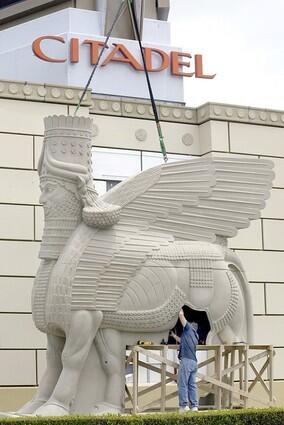
Citadel Outlets, 100 Citadel Drive, Los Angeles, (323) 888-1724
Youve seen this place from I-5 east of downtown L.A., of course.
Back in 1929, Adolph Schleichers idea was to surround his new Samson Tire and Rubber Co. plant with the facade of an Assyrian walled city.
An 18-foot winged bull with a human head was put in place in 2005.
Related story: “Exploring the Depression’s artistic legacy in San Francisco” (Carlos Chavez / Los Angeles Times)
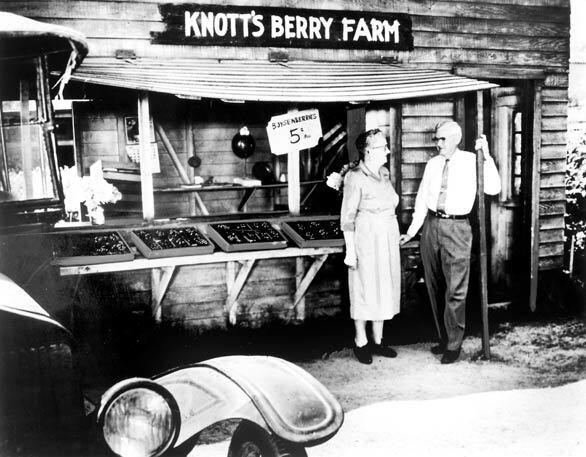
Knott’s Berry Farm, 8039 Beach Blvd., Buena Park, (714) 220-5200.
Depending on your definition, this could be the first theme park in America.
Though its first building went up in the 1920s and the ghost town didnt go up until the 1940s, the enterprises signature Chicken Dinner Restaurant opened in 1934, and the Knott family began growing their signature boysenberries around the same time. Shown: Cordelia and Walter Knott.
Related story: “Exploring the Depression’s artistic legacy in San Francisco (Mark Boster / Los Angeles Times)
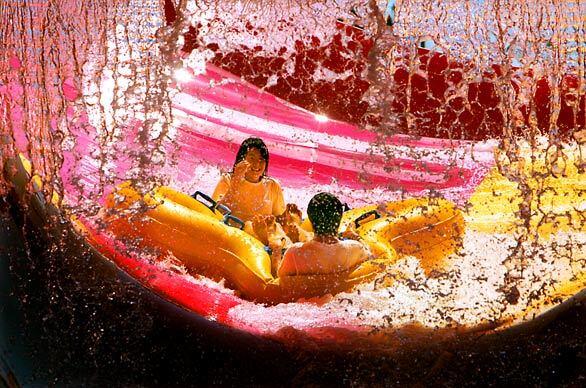
“These days, Knott’s Berry Farm is a 160-acre theme park with rollercoasters and rides left and right.
Soak City at the amusement park.
Related story: “Exploring the Depression’s artistic legacy in San Francisco” (File photo / Los Angeles Times)
Advertisement
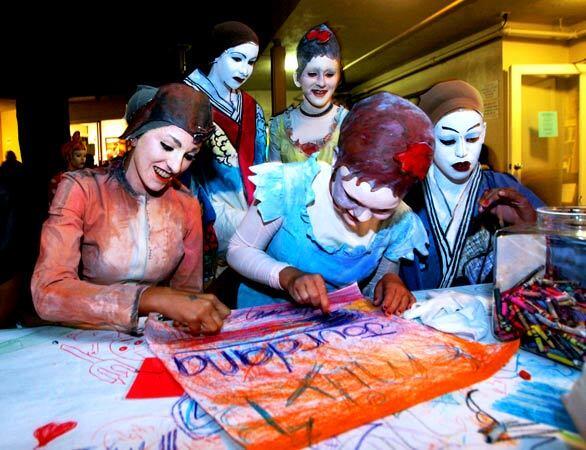
Seven decades later, the festival and pageant remain a beloved ritual in
Girls pass the time coloring as they wait to take the stage in the 2008 Pageant of the Masters show.
Related story: “Exploring the Depression’s artistic legacy in San Francisco” (Lori Shepler / Los Angeles Times)
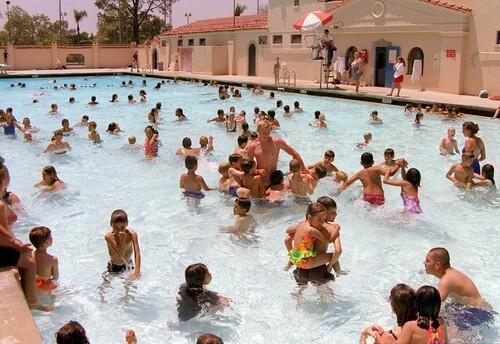
Hart Park, 701 S. Glassell St., Orange, (714) 744-7274.
Six blocks from Oranges Plaza Square Park, this 40-acre green space was created with help from the Works Progress Administration.
Dedicated as Orange City Park in May 1937, it includes a municipal pool (the plunge) along with a playground and ballfields.
Related story: “Exploring the Depression’s artistic legacy in San Francisco” The pool at Hart Park a decade ago.
Just about a mile away at 194 N. Atchison St. is the Orange Santa Fe Depot, with its red-tile roof, a Mediterranean Revival building that goes back to 1938 and now handles Metrolink commuters. (Robert Lachman / Los Angeles Times)
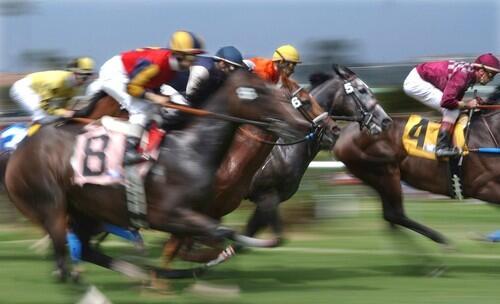
Del Mar Fairgrounds, 2260
Stimulus money for horse racing? You bet.
The WPA kicked in $500,000 toward construction of this fairgrounds and racetrack, putting hundreds of people to work raising dozens of Mission-style buildings.
Related story: “Exploring the Depression’s artistic legacy in San Francisco”
Horses fly over the turf course on an opening day. (Don Bartletti / Los Angeles Times)
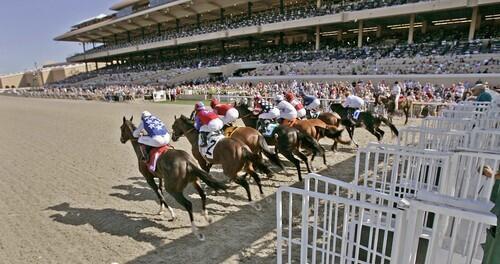
After less than a year of construction, the facility opened in October 1936.
These days the county fair runs in June and July, and then the Del Mar Thoroughbred Club takes over through September.
Related story: “Exploring the Depression’s artistic legacy in San Francisco” (Don Bartletti / Los Angeles Times)
Advertisement
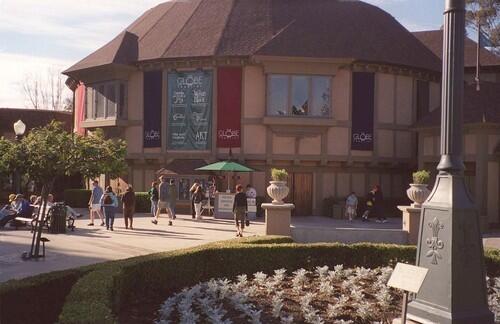
The Old Globe and Balboa Park, 1363 Old Globe Way,
For the
So they built a facsimile of the Old Globe, and from it sprung one of the nations leading regional theaters.
Related story: “Exploring the Depression’s artistic legacy in San Francisco”
The Globe burned to the ground in 1978, but a facsimile of the facsimile opened in 1982, and the shows go on. (Larry Gordon / Los Angeles Times)
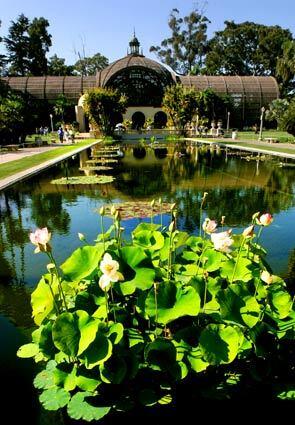
One 1935 attraction that didnt survive: Zorine the Nudist Queen and her court of not-quite-naked subjects. (Yes, there are photos. Go to BoingBoing and the San Diego Historical Society’s website).
Balboa Park’s Botanical Garden
Related story: “Exploring the Depression’s artistic legacy in San Francisco” (Stefano Paltera / For The Times)



